|


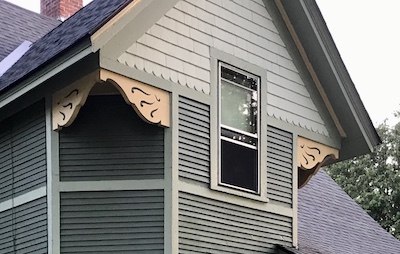
22 Farrar St.
|
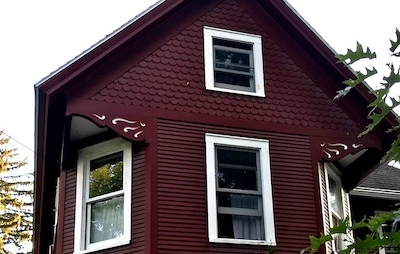
90 Congress St.
|
St. Albans has a wealth of architectural diversity spanning over 200 years of growth, style, and function. There is one feature in particular that adorns my own house that I have been trying to research, to find examples of in other parts of the country. A search of the "Field Guide To American Houses" and searches online have definitely left me wanting with this particular architectural detail. Sure it's a "bracket", sure it's Victorian in nature, sure plenty of houses have brackets, but it seems that these have such a specific placement, a particular use, that they need their own name. On many houses these are the showpiece. They also seem to require a great deal of attention which is often picky and finicky. I therefore decided that I will refer to these as "exigent brackets" (exigent meaning: 1. needing urgent attention, or demanding too much from other people). I think that sums these up perfectly. At least the ones on my house were.
Exigent brackets always come in pairs and are mirror images of each other often accentuating a projecting eave over a bay or similarly chamfered corner on a house. They are often wing shaped and, at least in St. Albans, mostly depict a sun motif. Many of these are constructed of a single, wide, pine, spruce or cypress board with design over layed with a single sheet of wood cut with a bandsaw. No plywood was used in the making of these brackets.
|
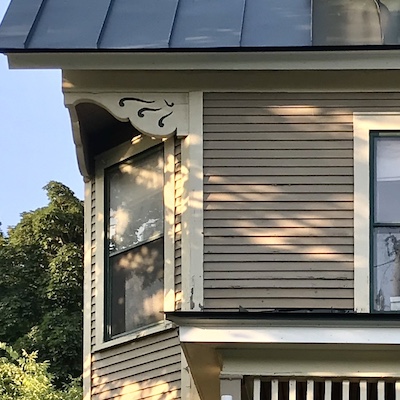
|
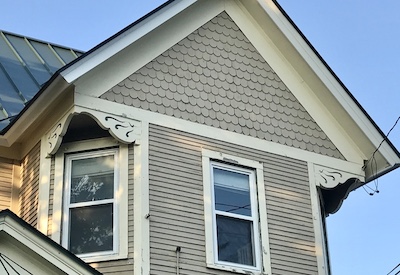
|
This house at 75 Fairfield St has three pairs of the most commonly found brackets in St. Albans. My guess is that these were made locally and a good possibility that these houses were built by the same builder. |
|
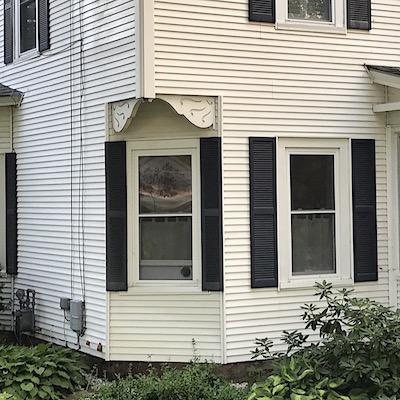
98 Congress St.
|
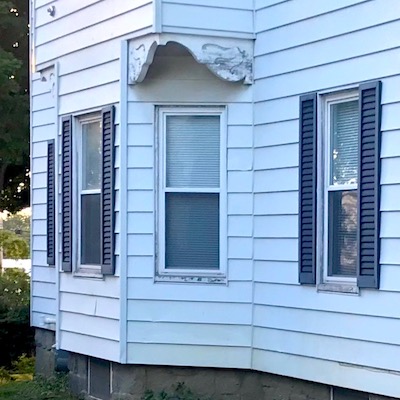
16 Messenger St.
|
13 & 15 Upper Newton St. twins
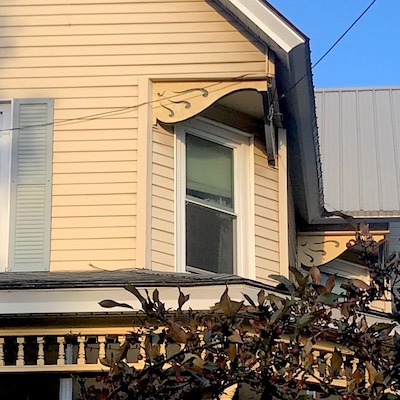
13 Messenger St.
|
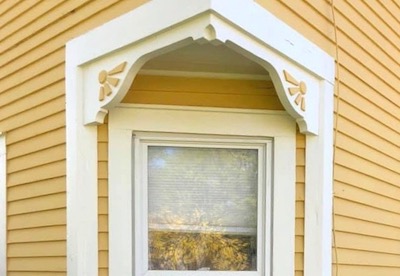
7 Stevens Ave.
This house matches 13 & 15 Upper Newton
in shape and style though the exigent brackets
are different.
|
|
So far the houses featured all have had the same sun motif. It can best be described as sun rays depicted with elongated commas. The next examples differ in shape and style tending to be more geometric. |
These houses at 72 Ferris St. and 12 Farrar St. are on opposite sides of town and yet their brackets are identical.
These are also the first to feature a drop-down finial at the juncture where the brackets meet.
43 & 45 Ferris St. these are identical and right next door to each other.
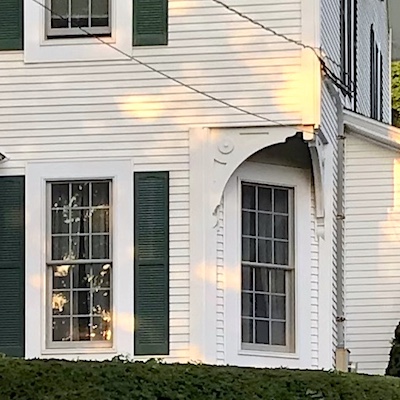
72 High St.
|
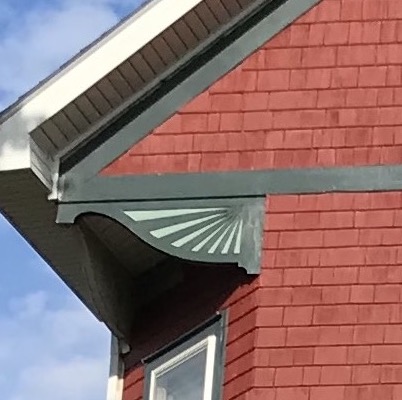
215 North Main St.
|
|
Exigent brackets start appearing towards the end of the Victorian era as a transition into the Queen Anne Colonial Revival and Shingle Style which, were much less formal than the Eastlake period of Victorian design. These styles came to dominance in town around the 1890s as St. Albans was booming being a main stopping point on the Central Vermont Railroad. Situated so far north it was a popular place to have a second home away from the crowded, dusty cities of Boston and New York. The shingle style homes came into prominence as a way to have a house that was "grandly informal" and harkened to those summer homes along the coast of the Northeast. Sheathed entirely in cedar shakes, these homes often boast eyebrow dormers as well (another popular St. Albans house detail). |
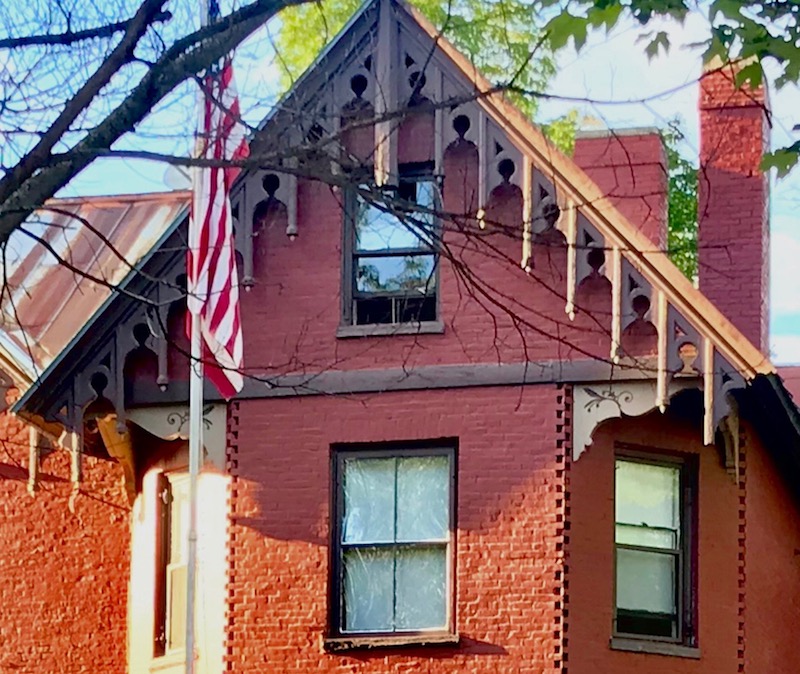
The Gables at 107 Bank St.
This is the only design I've found to be floral in nature rather than solar.
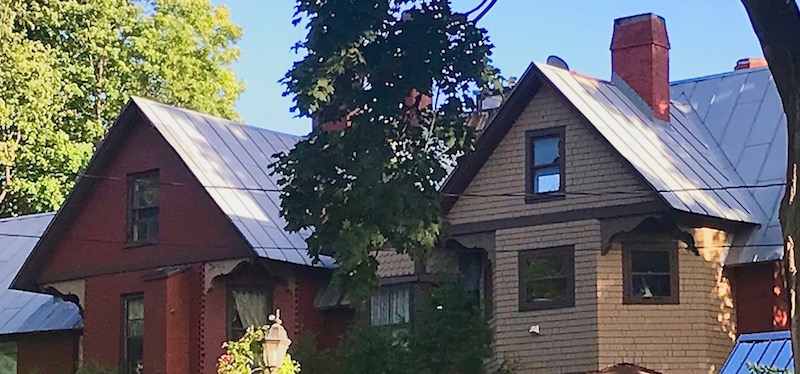
The rear view of 107 Bank St.
This house has SIX pairs of exigent brackets making it the house to beat... at least in St. Albans.
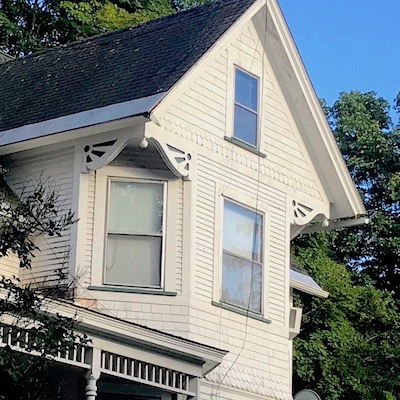
92 Congress St.
|
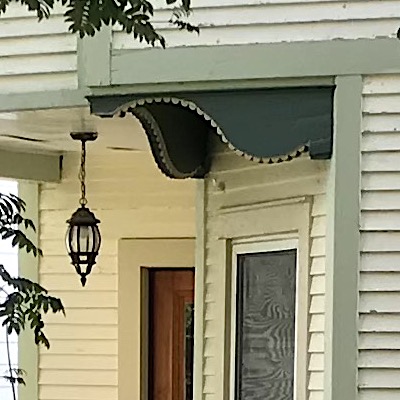
48 Messenger St.
|
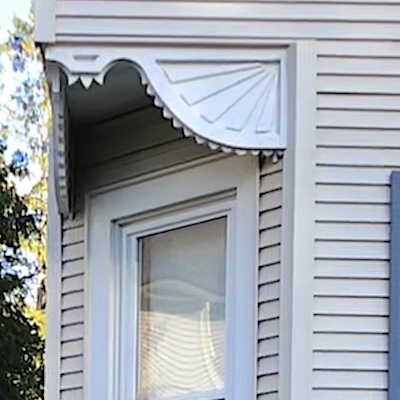
15 Brown Ave.
|
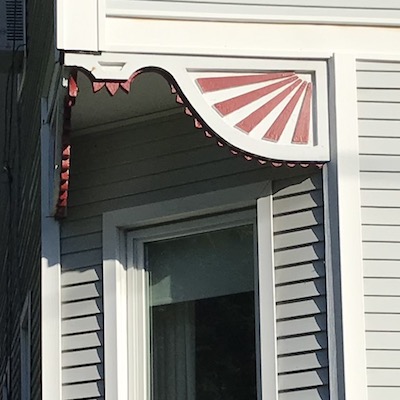
17 Brown Ave.
|
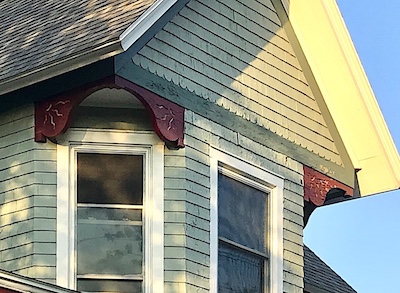
1 Brown Ave.
|
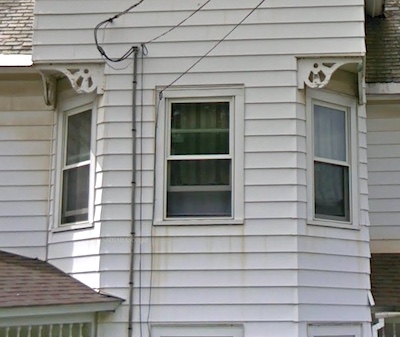
18 Barlow St.
|
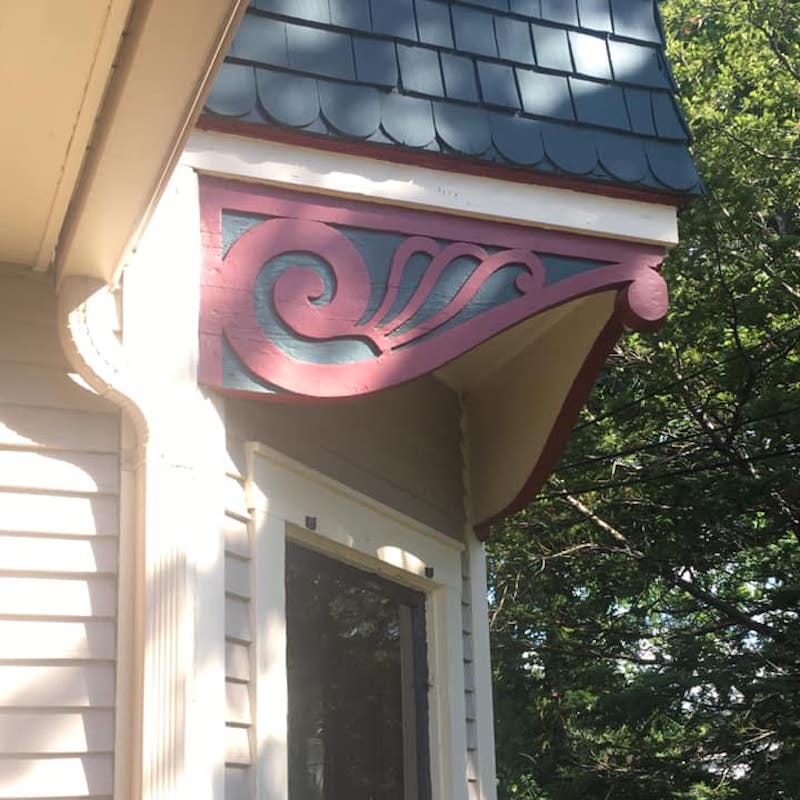
7 Barlow St.
Definitely a unique bracket and another that shows a non-solar motif.
This one's more indicative of ocean waves.
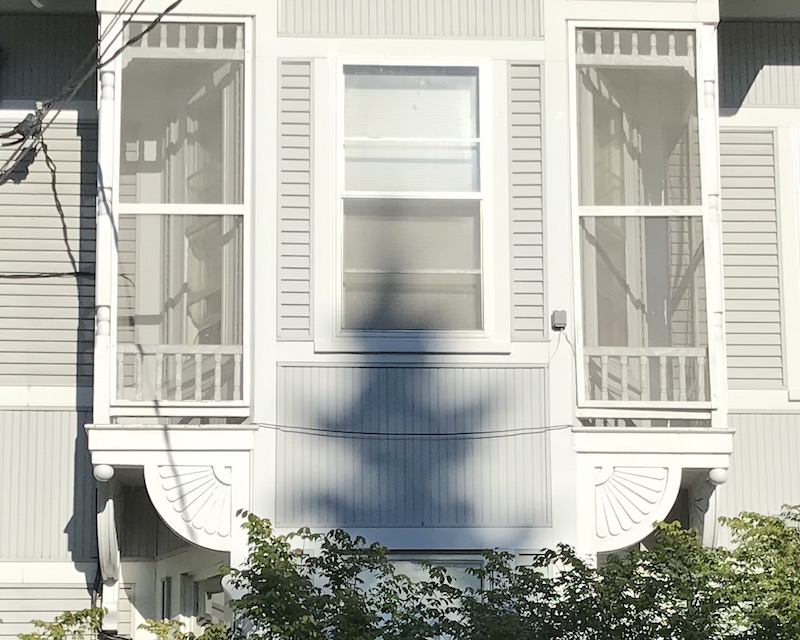
50 Bank St.
The monochromatic paint doesn't do this any justice.
Just take a minute and check out all these details...







|